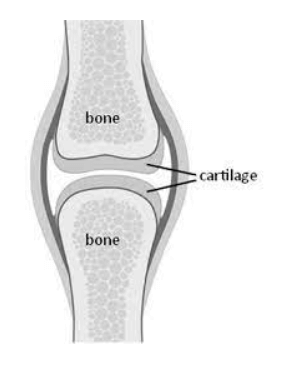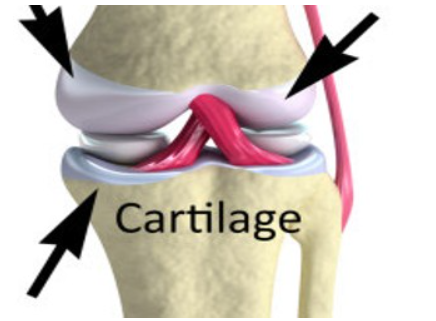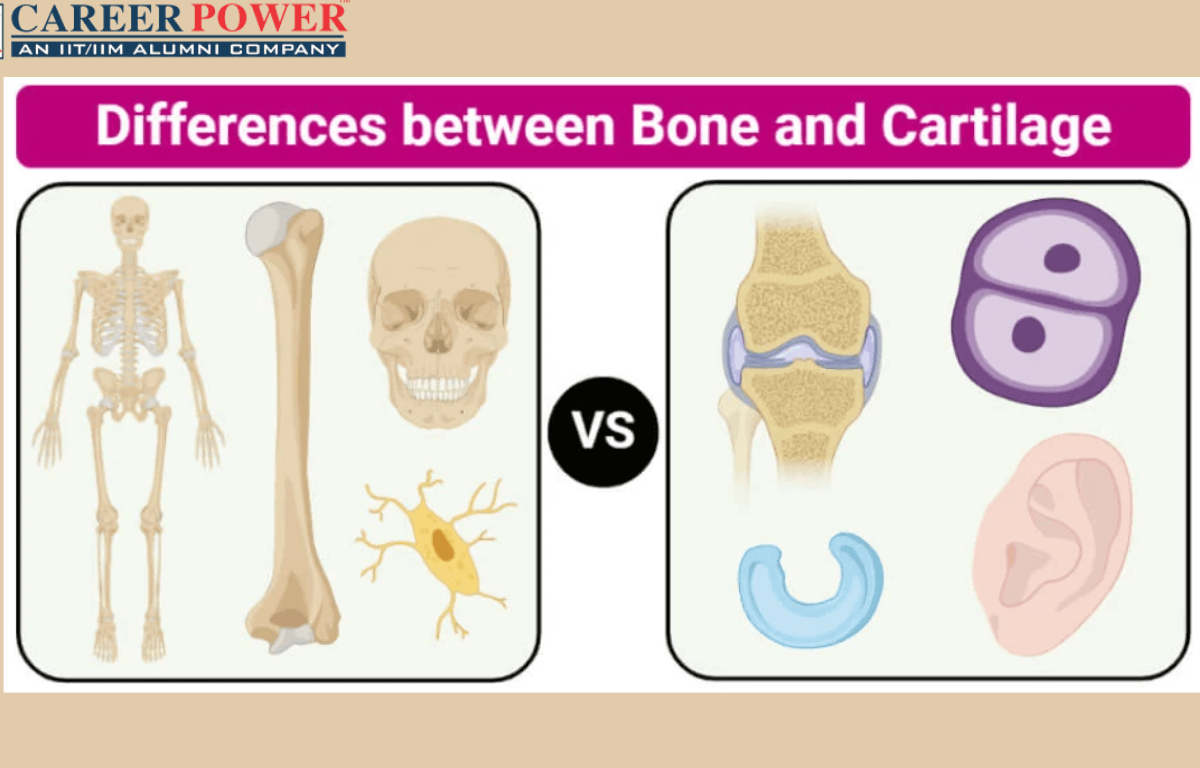As we all know the human body consists of many connective tissues, in which two of them are the bones and cartilage. Bones are hard and strong like the framework of a building. They provide support, protect your organs, and help you move. While cartilage is like a cushion or a flexible rubbery material. It’s softer and helps your joints move smoothly and comfortably, like the padding in your shoes. Both bones and cartilage are two of the most important topics in Biology.
Bone and Cartilage
Bones and cartilage are two types of connective tissues found in the human body. Bones are also known as Osseous Tissues that are hard and rigid. In comparison, cartilage on the other hand is flexible and rubbery. Both bones and cartilage are essential compartments of the skeletal system and play many crucial roles in maintaining the body’s form and functions.
What is a Bone?
A bone is a hard and rigid tissue that makes up the skeletal system. The human adult skeleton typically consists of 206 bones. However, the number of bones can vary slightly from person to person due to variations in the number of small bones, such as sesamoid bones (small, round bones embedded in tendons) and wormian bones (extra bones in the skull). In infants, there are 270 to 300 bones because some bones fuse together as a person grows and matures.

The bones serve several important functions, including providing support and structure to the body, protecting vital organs, allowing for movement by anchoring muscles, and storing minerals like calcium and phosphorus. Bones are composed of bone cells called Osteocytes embedded in a matrix of collagen fibers and calcium phosphate crystals. They can repair and remodel themselves over time.
What is a Cartilage?
Cartilage is a flexible and rubbery connective tissue that is less dense than bone. The cartilage is found in various parts of the body, such as the nose, ears, ribcage, and between joints. Cartilage, and bones, reduce friction during movement and provide a smooth surface for joint articulation. Cartilage also supports certain structures like the trachea and the ends of long bones. Unlike bones, cartilage has limited regenerative capacity, making injuries to cartilaginous tissues slower to heal.

Difference Between Bone and Cartilage
Here we have discussed a few differences between Bone and cartilage. These differences will highlight how bone and cartilage have distinct structures, composition, regeneration, capabilities, appearance, strength, and functions in the human body. Bones are responsible for the rigid framework and support, while cartilage plays a crucial role in cushioning and flexibility, particularly in joints.
| Difference Between Bone and Cartilage | ||
| Characteristics | Bone | Cartilage |
| Composition | Bone is the composition of hard and dense tissues. | Cartilage is made up of firm but flexible tissues. |
| Function | Bones provide structural support and protection for organs. Allow for movement by providing attachment points for muscles. | Cartilage acts as a cushion between the bones in joints, allowing for smooth and pain-free movement. It also provides support and shape to certain body parts, such as the nose and ears. |
| Blood Supply | The bones are highly vascularized (contains blood vessels). | Cartilage is avascular (lack of blood vessels). |
| Cell | The bones contain bone cells, which are also known as Osteocytes. | Cartilage contains cartilage cells, also known as Chondrocytes. |
| Regeneration | Bones can repair and remodel itself over time. | Cartilage has limited ability to regenerate. |
| Color | Bones are typically white or off-white. | Cartilage is bluish-white or translucent. |
| Strength | Bones are strong and rigid. | Cartilage is strong but flexible. |
| Types | Bones are of two types: compact bones and spongy bones. | Cartilage is of three types: Hyaline cartilage, fibrocartilage, and elastic cartilage. |
| Location in body | They are found throughout the body, forming various shapes and sizes based on their specific functions. | Cartilage is found in various parts of the body, including the joints (such as knee and hip), the ears (as the outer ear), the nose, and between vertebral discs in the spine. |
| Growth in Childhood | Bones grow in length and width through ossification. Continues during childhood and adolescence | Cartilage grows primarily in thickness, with limited growth potential in length. |
Functions of Bone and Cartilage
Bones provide the body’s structural framework, support, and protection for organs, while cartilage plays a crucial role in cusioning joints, maintaining shape, and reducing friction in various body parts. Both tissues are essential for overall mobility and bodily function. Here we have discussed some more primary functions of bones and cartilage in the human body.
Functions of Bone
- Support: Boones provide the structural framework that supports the body and holds it upright. They give the body its shape.
- Protection: Bones serve as a protective shield for vital organs. For example, the skull protects the brain and the ribcage protects the heart and lungs.
- Movement: Bones, in conjunction with muscles and joints, allow for movement. Muscles attach to bones, and when they contract, they move the bones, enabling various movements.
- Mineral Storage: Bones act as a reservoir for essential minerals, particularly calcium and phosphorous. When needed, these minerals can be released into the bloodstream.
- Blood Cell Production: The bone marrow inside certain bones is responsible for the production of blood cells, including red blood cells, white blood cells, and platelets.
- Energy Storage: In some situations, bones can store energy in the form of lipids (fats) within their marrow.
Functions of Cartilage
- Cushioning Joints: Cartilage covers the ends of bones in joints and provides a smooth, low-friction surface that allows bones to move against each other with minimal wear and tear.
- Support: Cartilage, especially in the ears, nose, and trachea, helps maintain the shape and structure of various body parts.
- Flexibility: Cartilage is flexible and elastic, which makes it well-suited for structures like the external ear (pinna) that need to maintain their shape while being flexible.
- Shock Absorption: In joints, cartilage acts as a shock absorber, reducing the impact on bones during activities like walking or running.
- Growth Plate: In growing individuals, there are growth plates made of cartilage at the ends of long bones. These plates allow bones to grow in length during childhood and adolescence.
- Connection: Cartilage can connect different bones, such as in the joints of the ribcage, where it helps maintain the shape and function of the chest.



 50 Vegetables Name for Kids in English a...
50 Vegetables Name for Kids in English a...
 Food Chain: Definition, Types, Examples,...
Food Chain: Definition, Types, Examples,...
 Human Respiratory System: Definition, Di...
Human Respiratory System: Definition, Di...













